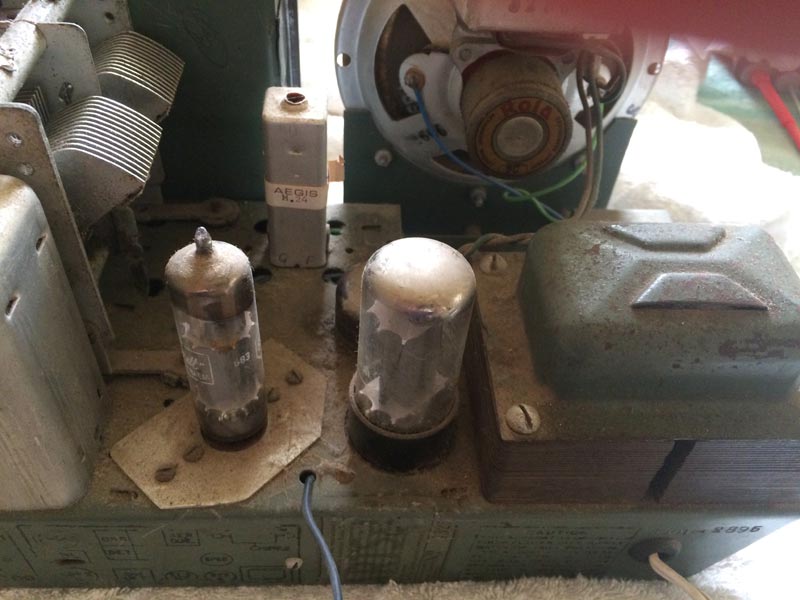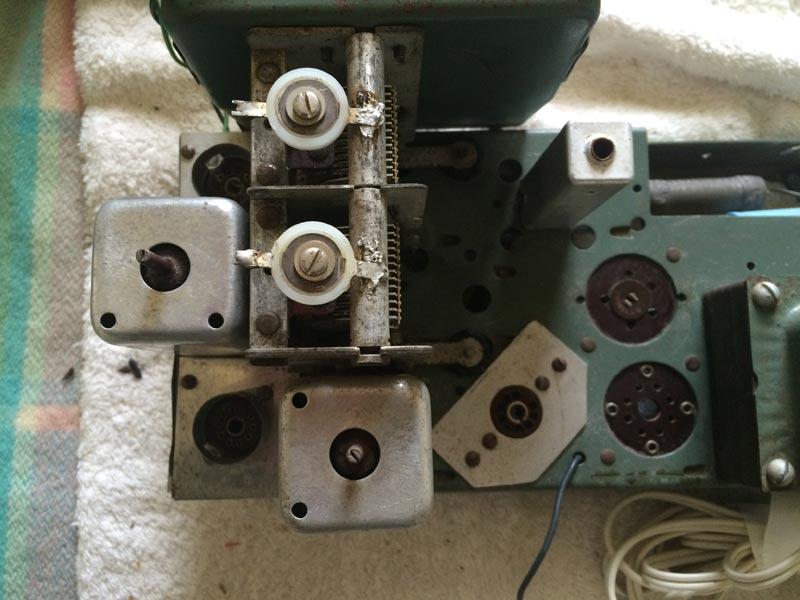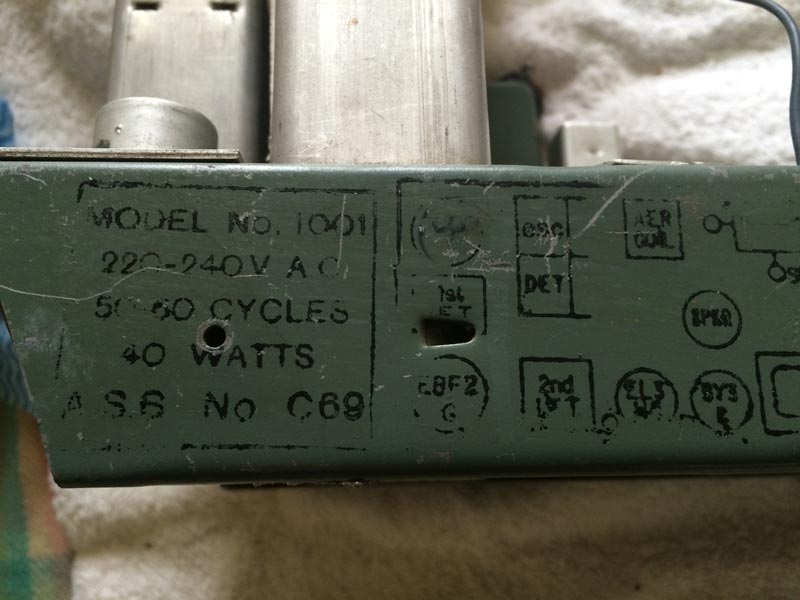Tech Talk
Forum home - Go back to Tech talk
|
Modified Tasma 1001
|
|
|
« Back ·
1 ·
Next »
|
|
|
Return to top of page · Post #: 1 · Written at 1:13:14 PM on 3 August 2016.
|
|
|
|
Location: Adelaide, SA
Member since 31 May 2016 Member #: 1933 Postcount: 3 |
|
Hi everyone.    |
|
|
Return to top of page · Post #: 2 · Written at 2:31:57 PM on 3 August 2016.
|
|
|
|
Location: Hill Top, NSW
Member since 18 September 2015 Member #: 1801 Postcount: 2193 |
|
Eww. |
|
|
Return to top of page · Post #: 3 · Written at 3:06:16 PM on 3 August 2016.
|
|
|
|
Location: Sydney, NSW
Member since 28 January 2011 Member #: 823 Postcount: 6882 |
|
Original line-up for that 1946/47 model was: 5Y3G, 6A8G/EK2, EBF2, EL3NG. |
|
|
Return to top of page · Post #: 4 · Written at 6:38:44 PM on 3 August 2016.
|
|
|
|
Location: Perth, WA
Member since 19 November 2008 Member #: 381 Postcount: 240 |
|
I completely restored my Tasma 1005 awhile ago and that included replacing all valve sockets. The 1005 is very similar to the 1001. |
|
|
Return to top of page · Post #: 5 · Written at 9:33:43 AM on 4 August 2016.
|
|
|
|
Location: Adelaide, SA
Member since 31 May 2016 Member #: 1933 Postcount: 3 |
|
Thanks for the responses. |
|
|
Return to top of page · Post #: 6 · Written at 5:54:34 PM on 4 August 2016.
|
|
|
|
Location: Melbourne, VIC
Member since 20 September 2011 Member #: 1009 Postcount: 1251 |
|
If you want to get the Tasma working again in its current state & keep the circuit original you could consider using these valves: |
|
|
Return to top of page · Post #: 7 · Written at 8:38:59 PM on 5 August 2016.
|
|
|
|
Location: Adelaide, SA
Member since 31 May 2016 Member #: 1933 Postcount: 3 |
|
Powered up the radio today after replacing a couple remaining electrolytic capacitors. Was lucky the set worked pretty well straight away. A bit of a tune and it sounds quite good. The tone control doesn't seem to have any effect (will investigate but appears wired correctly and switch is OK). The bakelite case and knobs cleaned up well and the glass dial is in good condition - the case actually polished up really well so it looks great. To complete needs some speaker cloth and a cotton power cord. |
|
|
Return to top of page · Post #: 8 · Written at 8:43:11 PM on 5 August 2016.
|
|
|
|
Location: Sydney, NSW
Member since 28 January 2011 Member #: 823 Postcount: 6882 |
|
The mods would affect its resale value, but a happy owner with a working radio is probably the best outcome given the circumstances. |
|
|
Return to top of page · Post #: 9 · Written at 9:18:15 PM on 5 August 2016.
|
|
|
|
Location: Hill Top, NSW
Member since 18 September 2015 Member #: 1801 Postcount: 2193 |
|
That 5Y3 would be the most modern-looking one I've ever seen. |
|
|
« Back ·
1 ·
Next »
|
|
|
You need to be a member to post comments on this forum.
|
|

Sign In

Vintage Radio and Television is proudly brought to you by an era where things were built with pride and made to last.
DISCLAIMER: Valve radios and televisions contain voltages that can deliver lethal shocks. You should not attempt to work on a valve radio or other electrical appliances unless you know exactly what you are doing and have gained some experience with electronics and working around high voltages. The owner, administrators and staff of Vintage Radio & Television will accept no liability for any damage, injury or loss of life that comes as a result of your use or mis-use of information on this website. Please read our Safety Warning before using this website.
WARNING: Under no circumstances should you ever apply power to a vintage radio, television or other electrical appliance you have acquired without first having it checked and serviced by an experienced person. Also, at no time should any appliance be connected to an electricity supply if the power cord is damaged. If in doubt, do not apply power.
Shintara - Keepin' It Real · VileSilencer - Maintain The Rage

